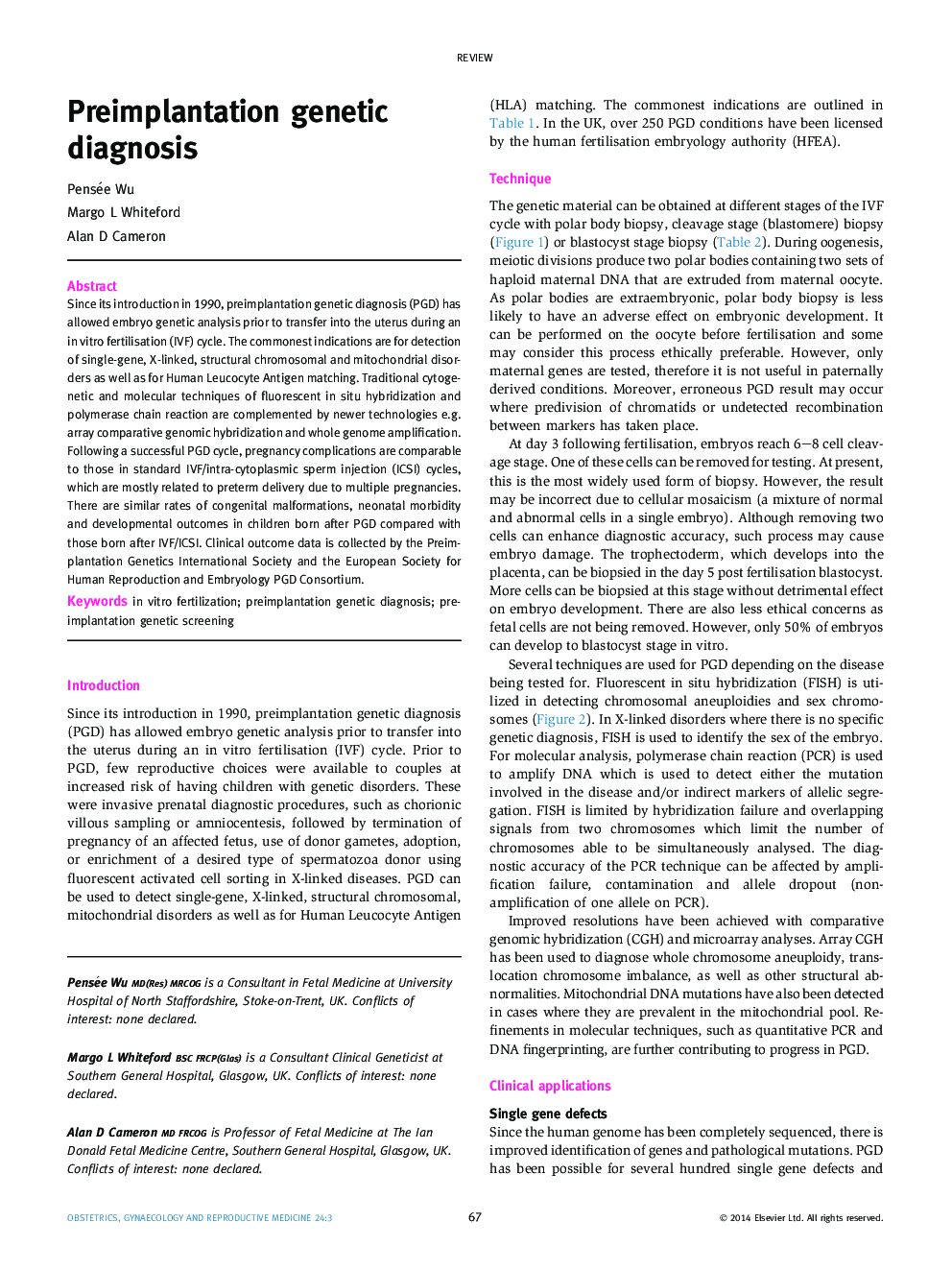| Article ID | Journal | Published Year | Pages | File Type |
|---|---|---|---|---|
| 3966664 | Obstetrics, Gynaecology & Reproductive Medicine | 2014 | 7 Pages |
Since its introduction in 1990, preimplantation genetic diagnosis (PGD) has allowed embryo genetic analysis prior to transfer into the uterus during an in vitro fertilisation (IVF) cycle. The commonest indications are for detection of single-gene, X-linked, structural chromosomal and mitochondrial disorders as well as for Human Leucocyte Antigen matching. Traditional cytogenetic and molecular techniques of fluorescent in situ hybridization and polymerase chain reaction are complemented by newer technologies e.g. array comparative genomic hybridization and whole genome amplification. Following a successful PGD cycle, pregnancy complications are comparable to those in standard IVF/intra-cytoplasmic sperm injection (ICSI) cycles, which are mostly related to preterm delivery due to multiple pregnancies. There are similar rates of congenital malformations, neonatal morbidity and developmental outcomes in children born after PGD compared with those born after IVF/ICSI. Clinical outcome data is collected by the Preimplantation Genetics International Society and the European Society for Human Reproduction and Embryology PGD Consortium.
